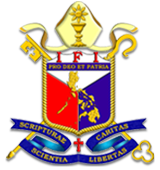FAITH HEALING
A Reflection on the 15th Sunday After Pentecost
Mark 7: 24-37

By: The Rev. Victoria S. Esguerra
Retired Priest, Diocese of Greater Manila Area
BACKGROUND
Biblical scholars ascertain that while the Gospel of Jesus Christ according to Matthew was written for the Jews around 80 AD, the Gospel according to Mark, shortest Gospel, was written for the Gentiles around 65-70 AD. As both have similar contents, the scholars believe each one drew from one another. Mark’s Gospel, written in Rome by Mark (Latin, for John in Jewish), is action-filled to satisfy the needs of the Roman readers who were mostly concerned for common sense practical matters and not Jewish-faith and prophecies traced to the Old Testament beliefs as presented by Matthew for the Jewish audience. In the life of Jesus, the Markan version concentrated on miracle stories rather than parables found in Matthew’s, which were difficult to understand for the non-Jewish. As Mark was Peter’s disciple and interpreter, and also a cousin to Barnabas (Paul’s companion), his stories of Jesus’s life and teachings were drawn from the teachings of Peter and Paul, as he was also their companion during their missionary journeys.
For each of Jesus’s miracle event, for healing/exorcism or command over forces of nature, the place or the patient/beneficiary was described to give more credence to the story to the non-believing Romans (Gentiles) who at that time were in control of the Israel-Palestine region. This Action-Gospel pointed to Jesus as a Servant Savior at work: teaching, healing, doing miracles, cleansing and pardoning sins, and other acts of mercy, for the people whom He encountered regardless of their backgrounds. “Anointed with power,” Jesus was fully engaged in His mighty deeds: “Demons cast out (1:21-28); fever put down (1:29-31); different diseases healed (1:32-34); lepers made whole (1:40-45); palsied man made to walk (2:1-12); withered hand cured (3:1-5); maniac’s mind restored (5:1-15); woman’s blood hemorrhage stopped (5:21-34); Jairus’s daughter back to life (5:35-43); blind man healed (8:22-26).” (Henrietta Mears, “What the Bible is All About, 1966.)
He called disciples who were busy, successful, and not idle people who accompanied Him in His journeys (on foot) so they would learn from His exemplary ways which sometimes departed from their Jewish norms. In a brief period of three years, they were sent out on to their assigned tasks to spread the Gospels to the whole creation and to empower the believers using their faith to heal and cast out demons from the sick. (Mark 16:15-17)
SYROPHOENICIAN WOMAN’S FAITH
At the biblical time of Jesus, the Jews believed that the universe was divided between the Kingdom of God and the Kingdom of Satan; and sickness was attributed to sin – caused by Satan or the one who sinned (maybe the patient or the one related to the patient). Disease did not always manifest in physical aches, defects, or suffering but could result in mental disorders or prolonged suffering, e.g., the experience of the woman “whom Satan bent for 18 years”. The Jews sought the help of priests who used methods prescribed in the Levitical Code; or the physicians whose skills were sometime less appreciated. They realized that a more aggressive way was needed to drive out the evil deeds of Satan, and witnessed Jesus with more powerful and mighty acts in healing diseases or removing the “uncleanness caused by evil.”
As Jesus and His disciples traveled through the region of Tyre (district in Phoenicia City north of Palestine and along the coast of now Lebanon on the Mediterranean River), He wanted seclusion from people (perhaps to rest?) in somebody’s house. But a Syrophoenician woman, of Canaanite descent, learned of His whereabouts and she shouted outside the house, “Have mercy on me, Lord, Son of David; my daughter is tormented by a demon.” But Jesus ignored her; and the disciples urged Him to send her away because she kept shouting (more details in Matthew’s). Jesus answered back, “I was sent only to the lost sheep of the House of Israel.” But she came in, knelt before Him, and begged, “Lord, help me.” “It is not fair to take the children’s food and throw it to the dogs,” Jesus replied. She answered back, “Yes, Lord, yet even the dogs eat the crumbs that fall under their master’s table.” Jesus responded, “Woman, great is your faith! Let it be done for you as you wish” (Mt 15:28). In Mark’s version (7:28-30): He said, “‘For saying that, you may go – the demon has left your daughter.’ So she went home, found the child lying on the bed, and the demon gone.”
Jesus inferred that He was sent on a mission only to the Jews and not the non-Jews (Gentiles), referred to as “the dogs”. The Syrophoenician woman, who came from a different culture of polytheistic beliefs (including the worship of Baal and Tanit), insisted that she herself was willing to accept whatever she could salvage from the “crumbs” (blessings) of Jesus’s mercy and goodness. Impressed by the strength of her convictions, He instantly exorcised the woman’s daughter by long distance even without seeing the patient. The disciples did not see the actual healing but witnessed the power of Jesus’s Voice (intention) alone to work out the miracle cure.
On this occasion, the faith of the Syrophoenician woman was evidently admirable with her courage, assertiveness, risk-taking, persistence, strong logical reasoning, and willingness to accept the merciful grace of Jesus despite contrary to her own religion. Jesus, on the other hand, was amazed by the strength of her faith, so He graciously acquiesced. Witnessed by His disciples, they were perhaps baffled by His actions as He violated certain cultural traditions: (1) Different racial backgrounds – Jew and non-Jew; (2) Different genders – man and woman (strangers to each other); and (3) Lord/Master Jesus interfacing with a woman considered to be lower in stature in Jewish society (demanding to heal her child, at that!). But Jesus overcame the sting of tradition by using His compassionate heart and bending in to the needs of this begging woman. He performed long-distanced healing for expediency, also escaping the critical eyes except for the mummed disciples, and showed His mighty powerful healing act. The woman on her part, gratified and contended by Jesus’s mercy and belief in her faith, was also freed from social condemnation by the Jewish society and her own people. Jesus and His disciples knew offhand that this merciful healing making this woman of faith a believer in Jesus was also the beginning of her evangelistic mission to her own people (Gentiles).
FAITH OF DEAF-MUTE
As Jesus and His disciples travelled from Tyre, by way of Sidon (another district in Phoenicia) towards the Sea of Galilee, enroute to Decapolis, He encountered a deaf man who wanted to be healed. Without hesitation, He took him away from the crowd and performed a conventional healing act practiced by the people of His time: “put His fingers into his ears; He spat and touched his tongue.” After praying, He said to him, “Ephphatha” (“Be opened.”); instantly, his ears were opened and his tongue released; he spoke plainly. Jesus ordered him and his companions not to tell anyone; instead, the totally amazed and grateful people went around proclaiming His mighty deed. Again, here were the witnesses who willingly became Jesus’s evangelizers spreading the Good News to their communities.
These two healing acts of Jesus were performed privately amidst the security of His disciples. In the Syrophoenician woman’s story, Jesus violated cultural, conventional rules; however, in the case of the deaf-mute, He used a conventional method accepted during His time (spitting saliva, used to counteract the sorcerer’s work). In both ways, Jesus proved to His disciples that healing acts should be impartial -- transcending boundaries of race/creed, gender, status, cultural traditions, and recognizing even unknown persons in need. These should be done incognito without fanfare and without an admiring audience; and should be performed based on the persons’ sincerity of faith without jeopardizing the confidentiality of the person-healer relationship. Through the faith of the woman, a lowly “dog” (or “puppy” according to some biblical scholars) from Jewish viewpoint due to her religious background, Jesus showed how the courage of her convictions emancipated her from social stigma into the true acceptance of Jesus as the Servant Savior. In the case of the deaf-mute, likewise, his ears were opened to hear and his tongue released to preach the Gospel of the Lord. Both stories opened the eyes of the doubting disciples who before this time were not yet aware of the greatness of Jesus the Savior.
JESUS AMIDST PANDEMIC TODAY
In relating the healing acts of Jesus during biblical times to our present-day reality, we can ask ourselves, “What would Jesus do today amidst the covid-19 pandemic?’ We can only surmise according to the basis of our faith, being either a Markan Gospel reader or a Matthew Gospel reader. As a Markan reader, we should expect an action-filled ministry for Jesus; or as a Matthew Gospel believer, we might insist on the bases of His actions as grounded by His Jewish traditions. Regardless of our own inclinations, Jesus would definitely choose His own way/s. Offhand, He probably would not require an inquiry on the source of Sars-2 Covid virus; he already knows from where, as this is part of the evolving natural balance of creation. Viruses, in a spectrum of 200 viruses, are in constant mutation giving results to newer variants each time.
He would not ask for an update on statistics on the number of active cases or those healed, or the number of deaths from covid. As to be expected, He would be more interested in the healing aspects of His ministry, possibly planning where to hold His healing sessions for thousands or millions: in giant sports arenas, school stadiums, through social media technology (via facebook or zoom/skype), or perhaps His favorite atmospheric space to spread the healing graces evenly worldwide. Regardless of the background of the covid-sick people, they would be healed impartially without questions by the merciful Jesus; and we can probably expect a strengthening of the lukewarm faith and/or the faith-acceptance of the new believers.
Perhaps His preference might be to respect and honor the labors of medical scientists or human endeavors aimed to cure this dreaded disease, and to allow humankind to find the right solutions. If this is His choice, He would enhance the knowledge of pharmaceuticals in cooperative efforts in finding the most efficacious formulas (vaccines or preventive medicines) and provide the guidelines for more equitable distribution of these medications to alleviate human suffering worldwide; and in effect preventing massive monopoly profits for a few.
Also, we can surmise that Jesus would use this momentous occasion to empower world leaders with knowledge, discernment, and compassion to unite in working for balanced policies for health and economic issues. He would probably demand the policymakers to open up the churches for people locked in their homes and locked out unable to express their faith and gratitude to God amidst this gloomy situation. If there is a most favorable time to plead to the Lord for mercy, forgiveness, compassion, and healing, this is the most opportune time.
Ironically, as more covid cases surge with hospital accommodations practically nil and the economy plunges into a depression, then finger-pointing ensues while Jesus is left outside of the doors of homes, hospitals, and churches. Like the two healing stories in this Sunday Gospel, Jesus would respond to those who ask, seek, and knock on His heart. Jesus is as much with us today as He was in biblical times. WITH REPENTANCE AND FAITH, THE WORLD WILL BE HEALED OF THIS PANDEMIC!
ADVICE FROM JESUS IN TRUE LIFE IN GOD (TLIG) MESSAGE: “have I not said to love your enemies and pray for them? My Father in heaven permits the sun to rise on them as well as the good, and the rain to fall on honest and dishonest men alike; giving trials will only make you aware that without Me you can do nothing, and you will be cleaving on Me even more, depending on Me entirely; this is to teach you that if you have confidence in Me, you will come to no harm, for I will be there to recue you in your trials” (September 5, 2016; ww3.tlig.org).
WITH CERTAINTY WE STRONG BELIEVE THAT JESUS WOULD DEMAND FOR THE CHURCHES TO BE OPENED!


